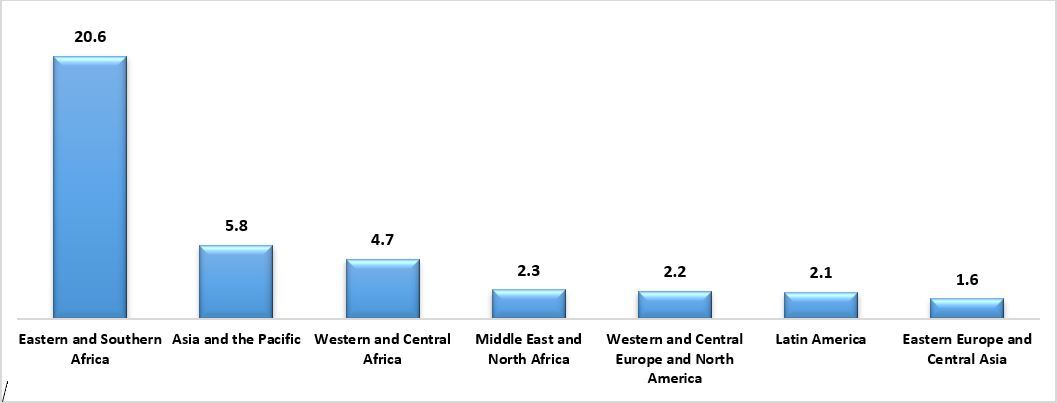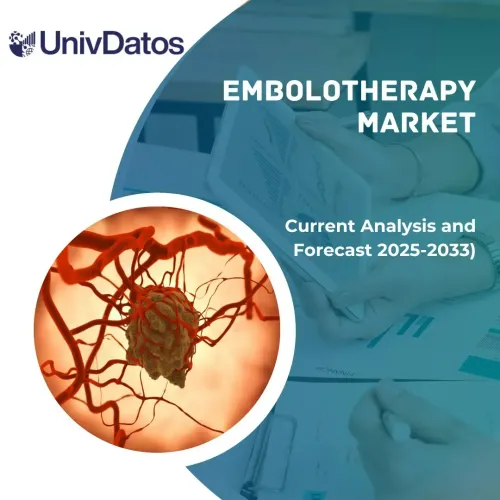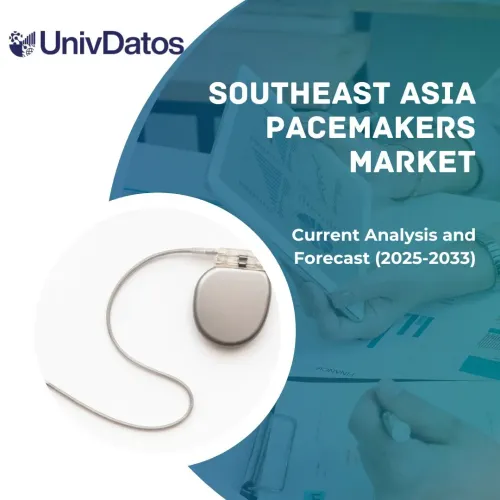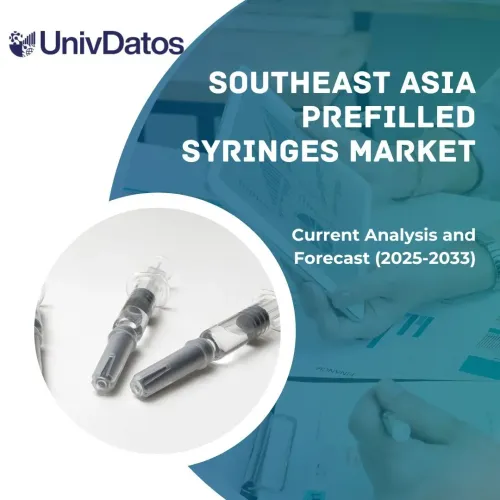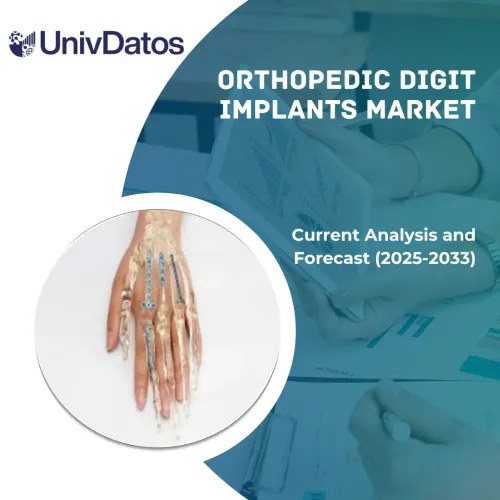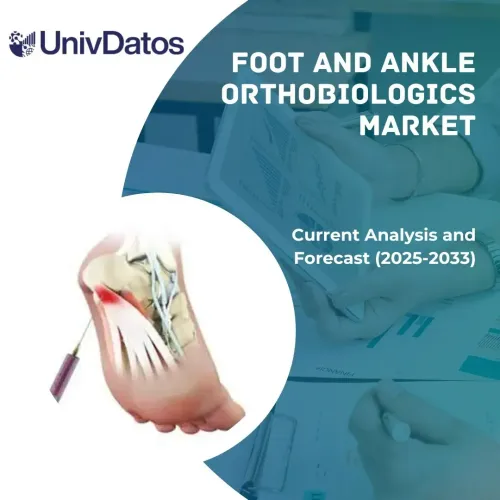- Home
- About Us
- Industry
- Services
- Reading
- Contact Us
Biochip Market: Current Analysis and Forecast (2021-2027)
Emphasis on Type (DNA Chips, Lab-on-a-Chip, Protein Chips, Others); Technology (Microarray, Microfluidics); Application (Drug Discovery & Development, Disease Diagnostics, Genomics, Proteomics, Others); End-User (Hospitals & Diagnostics Centers, Academics & Research Institutes, Biotechnology & Pharmaceuticals, Others); Region and Country
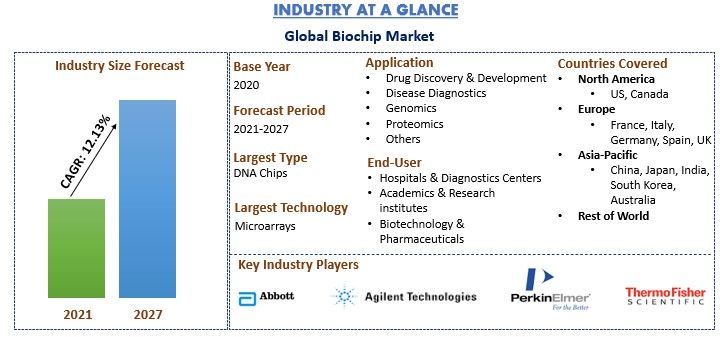
Biochip Market was valued at ~US$ 11 billion in 2020 and is expected to grow at a CAGR of ~12.1% over the forecast period (2021-2027). A biochip is a little miniaturized device that can perform multiple biochemical reactions at the same time in molecular laboratories. It can quickly screen a variety of biological analytes for varied applications, including disease diagnosis and the detection of biological substances that are toxic to a system. It is designed based on microarray and microfluidic technologies, among which digital microfluid biochip is highly efficient, and has gained significant popularity in the biochemical field.
The adoption of biochips is increasing in various applications in genomics, proteomics, and drug discovery. The advancement of targeted and personalized medicines for the treatment of cancer is influencing the market growth. Other factors such as the rising number of biochips applications, technological advancement in biochips, and rise in healthcare spending facilities are leveling up the biochips market demand. As per the OECD, between 2010 and 2019, health spending averaged around 8.7% of GDP every year. At the same time, however, healthcare spending in the United States increased from 16.3% to 17% of GDP. Moreover, rising funds by government and private organizations in the emerging nations are expected to provide better opportunities for the market.
Global Prevalence of HIV Cases, 2020 (Mns)
Some of the major players operating in the market are Abbott Laboratories Inc., Agilent Technologies, Inc., PerkinElmer Inc., Thermo Fisher Scientific, Inc., Bio-Rad Laboratories Inc, GE Healthcare Inc., Fluidigm Corporation, Illumina, Inc., F. Hoffmann-La Roche AG, and BioMerieux SA. Several M&A’s along with partnerships have been undertaken by these players to expand their business portfolio and reach across the globe.
Insights Presented in the Report
“Amongst Type, DNA Chips segment holds the major share.”
Based on products type, the market is fragmented into DNA chips, lab-on-a-chip, protein chips, and others. The DNA chips segment dominated the market generated major revenue of USD 4,367.41 million in 2020. Furthermore, the lab-on-a-chip segments are also expected to grow at the highest CAGR of 12.98% during the forecast period. The greatest advantage of the DNA arrays is their speed and high throughput, and they are useful in various genomic applications, including single nucleotide polymorphism (SNP) analysis, gene expression studies, disease classification, function prediction, pathway identification, new drug development, clinical diagnostics, and toxicology studies. For instance, DNA microarray-based gene expression profiling can provide powerful and independent prognostic information in patients with newly diagnosed breast cancer.
“Amongst Technology, Microfluids segment is anticipated to grow at the highest CAGR during the analyzed period.”
Based on the technology, the market is fragmented into microarray and microfluidics. The microarray segment of Global Biochips dominated the market with around 11.73% market share. The Microfluidics segment generated the revenue of USD 4,368.84 Mn in 2020 and is expected to grow at a CAGR of 12.74% during the forthcoming years owing to its application in forensics and drug discovery.
“Amongst Applications, Disease Diagnostics segment is anticipated to grow at the highest CAGR during the analyzed period.”
Based on the application, the market is fragmented into drug discovery & development, disease diagnostics, genomics, proteomics, and others. The drug discovery & development segment of Global Biochips dominated the market with around 11.91% market share. The Disease Diagnostics segment generated a revenue of USD 3,012.10 Mn in 2020 and is expected to grow at a CAGR of 13.22% during the forthcoming years. The demand for drug discovery and development is increasing owing to the increased research and development and the involvement of biotech companies. Moreover, there is a significant impact of the adoption of AI in drug discovery, and as per a report, there are almost 100 partnerships between AI vendors and large pharma companies for drug discovery since 2015, with increasing numbers witnessed in recent few years. Analysis shows that four partnerships were forged in 2015, which rose to 27 by 2020, an increase of 575% in just six years.
“Amongst End-user, Biotechnology & Pharmaceutical Companies segment is anticipated to grow at the highest CAGR during the analyzed period.”
Based on the end-user, the market is fragmented in hospitals & diagnostics centers, academics & research institutes, biotechnology & pharmaceuticals, and others. The Hospitals & Diagnostic Centres dominate the market in 2020 with 11.81% CAGR owing to the rising exploitation of biochips in hospitals and diagnostic centers due to their advantages such as reduction of time and cost, and the ability to deliver high throughput without the need for heavy and bulky instruments. The Biotechnology & Pharmaceutical Companies is anticipated to register the fastest CAGR of 12.87% in the upcoming period owing to the rising focus of various companies on developing novel biochips for detecting the infection in the body. In 2016, Thermo Fisher Scientific Inc. completed the acquisition of Affymetrix Inc., a leading provider of cellular and genetic analysis products. This acquisition helped Thermo Fisher to strengthen its leadership in biosciences, as well as acquire new genetic analysis capabilities to better serve clinical and applied markets.
“North America signifies one of the largest markets and Asia-Pacific is expected to be the fastest-growing markets of Biochip market.”
For a better understanding of the market adoption of the Biochip market, the market is analyzed based on its worldwide penetration in the countries such as North America (United States, Canada, and Rest of North America), Europe (Germany, France, Italy, Spain, United Kingdom and Rest of Europe), Asia-Pacific (China, Japan, India, Australia, and Rest of APAC), and Rest of World. North America constitutes a major market for Biochip and generated revenue of USD 3,826.38 million in 2020 owing to the advanced technology for diagnosis and treatment of chronic disorders, availability of private and government funding, etc. However, the Asia-Pacific region would grow at the highest rate during the forecast period.
Reasons to buy this report:
- The study includes market sizing and forecasting analysis validated by authenticated key industry experts
- The report presents a quick review of overall industry performance at one glance
- The report covers an in-depth analysis of prominent industry peers with a primary focus on key business financials, product portfolio, expansion strategies, and recent developments
- Detailed examination of drivers, restraints, key trends, and opportunities prevailing in the industry
- The study comprehensively covers the market across different segments
- Deep dive regional level analysis of the industry
Customization Options:
Biochip market can further be customized as per the requirement or any other market segment. Besides this, UMI understands that you may have your own business needs, hence feel free to connect with us to get a report that completely suits your requirements.
Table of Content
Analyzing the historical market, estimation of the current market, and forecasting the future market of the Global Biochip market were the three major steps undertaken to create and analyze the adoption of Biochip for the different applications across major End-users such as Hospitals & Diagnostics Centers, Academics & Research institute, Biotechnology & Pharmaceuticals, and Others. Exhaustive secondary research was conducted to collect the historical market numbers and estimate the current market size. Secondly, to validate these insights, numerous findings and assumptions were taken into consideration. Moreover, exhaustive primary interviews were also conducted, with industry experts across the value chain of the Biochip sector. Post assumption and validation of market numbers through primary interviews, we employed a top-down/bottom-up approach to forecast the complete market size. Thereafter, market breakdown and data triangulation methods were adopted to estimate and analyze the market size of segments and sub-segments the industry pertains to.
Detailed methodology is explained below:
Analysis of Historical Market Size
Step 1: In-Depth Study of Secondary Sources:
Detailed secondary study was conducted to obtain the historical market size of the Biochip through company internal sources such as annual reports & financial statements, performance presentations, press releases, etc., and external sources including journals, news & articles, government publications, competitor publications, sector reports, third-party database, and other credible publications.
Step 2: Market Segmentation:
After obtaining the historical market size of the Biochip market, we conducted a detailed secondary analysis to gather historical market insights and share for different segments for major regions. Major segments included in the report are Type, Technology, Applications, End-user, and Region. Further country-level analyses were conducted to evaluate the overall adoption of Biochip in every region.
Step 3: Factor Analysis:
After acquiring the historical market size of different segments and sub-segments, we conducted a detailed factor analysis to estimate the current market size of Biochip. Further, we conducted factor analysis using dependent and independent variables such as rising applications in various fields such as genomics, proteomics, and drug discovery.
Current Market Size Estimate & Forecast
Current Market Sizing: Based on actionable insights from the above 3 steps, we arrived at the current market size, key players in the Biochip Market, and market shares of the segments. All the required percentage shares split, and market breakdowns were determined using the above-mentioned secondary approach and were verified through primary interviews.
Estimation & Forecasting: For market estimation and forecast, weights were assigned to different factors including drivers & trends, restraints, and opportunities available for the stakeholders. After analyzing these factors, relevant forecasting techniques i.e., the top-down/bottom-up approach was applied to arrive at the market forecast about 2027 for different segments and subsegments across the major markets globally. The research methodology adopted to estimate the market size encompasses:
- The industry’s market size, in terms of value (USD) and the adoption rate of Biochip across the major markets domestically
- All percentage shares, splits, and breakdowns of market segments and sub-segments
- Key players in the Biochip market in terms of services offered. Also, the growth strategies adopted by these players to compete in the fast-growing market.
Market Size and Share Validation
Primary Research: In-depth interviews were conducted with the Key Opinion Leaders (KOLs) including Top Level Executives (CXO/VPs, Sales Head, Marketing Head, Operational Head, and Regional Head, Country Head, etc.) across major regions. Primary research findings were then summarized, and statistical analysis was performed to prove the stated hypothesis. Inputs from primary research were consolidated with secondary findings, hence turning information into actionable insights.
Split of Primary Participants in Different Regions
Market Engineering
Data triangulation technique was employed to complete the overall market estimation and to arrive at precise statistical numbers of each segment and sub-segment of the Biochip market. Data was split into several segments & sub-segments post studying various parameters and trends in the areas of Type, Technology, Applications, End-user, and Region of the Biochip market.
Main Objective of the Biochip Market Study
The current & future market trends of Biochip were pinpointed in the study. Investors can gain strategic insights to base their discretion for investments from the qualitative and quantitative analysis performed in the study. Current and future market trends were determined the overall attractiveness of the market at a regional level, providing a platform for the industrial participant to exploit the untapped market to benefit as a first-mover advantage. Other quantitative goals of the studies include:
- Analyze the current and forecast market size of Biochip in terms of value (USD). Also, analyze the current and forecast market size of different segments and sub-segments.
- Segments in the study include areas of Type, Technology, Applications, End-user, and Region
- Define and analysis of the regulatory framework for the Biochip industry
- Analyze the value chain involved with the presence of various intermediaries, along with analyzing customer and competitor behaviors of the industry
- Analyze the current and forecast market size of the Biochip market for the major region
- Major regions studied in the report include North America (the United States and Canada), Europe (Germany, France, Italy, Spain, and United Kingdom), Asia-Pacific (China, Japan, India, South Korea, and Australia), and Rest of the World
- Company profiles of the Biochip market and the growth strategies adopted by the market players to sustain in the fast-growing market
- Deep dive regional level analysis of the industry
Related Reports
Customers who bought this item also bought

